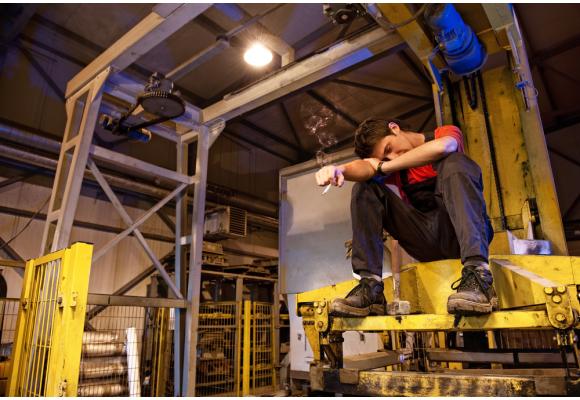
Safety Mats to Avoid Slips and Injuries at Work
The last thing you want is for an employee to hurt themselves while working at your company. It’s bad news for your employee and can also cost the business through insurance claims.
In what way do workers hurt themselves?
Let’s face it, we’ve all slipped up at one point or another. And while, usually, we catch ourselves before we fall, or just end up with a bruise and some embarrassment, what appears to be a small fall can result in significant injuries. A Safe Work Australia fact sheet stated that thousands of injuries arise from slips and trips every year, and the most common injuries are cuts, bruises, musculoskeletal injuries, fractures and dislocations.
What are the main workplace hazards to look out for?
Falls are especially common in workplaces where there are slippery floors, like polished wood or tiles, or there are slippery substances on the floor, like water in industrial sites or food and soap in commercial kitchens. Some hazards to watch out for include:
-
Wet floors
-
Greasy floors
-
Dry floors with dust or powder on them
-
Uneven surfaces
-
Polished or waxed floors
-
Loose carpeting
-
Loose mats
-
Steps
-
Electrical cables
-
Ramps and other sloped surfaces
-
Metal surfaces
-
Organic matter like leaves
-
Traces of bad weather like rain, ice or frost.
How can you prevent slips and trips in your workplace?
One way to avoid workers from hurting themselves from slips and trips is to invest in safety matting. Slippery or uneven walking surfaces account for a large number of workplace injuries, and matting can be a simple and cost effective way to solve the problem. The Safe Work Australia fact sheet explained that floor mats improve the slip resistance of the ground surface. Plastic matting, such as interlocking PVC mats, were recommended as they give both good drainage and slip resistance.
Here are some other ways to reduce workplace injuries like trips and falls:
Tidy workplace culture
If you can instil a work attitude of regularly cleaning up and not leaving hazards around, you will see less workplace injuries. Encourage good organisation and cleanliness through simple acts like cleaning up spills right away and closing cabinets and drawers. You could organise a kitchen duty or cleanup roster.
Proper footwear
Demand that your workers wear shoes with proper soles for the work environment. The type and height of the heel can be an important factor in reducing falls, as well as the way shoelaces are tied and the material the shoe is made of.
Sufficient lighting
Poor lighting is associated with more workplace accidents. Ensure your workplace is well lit with particular attention towards hallways, stairs, ramps, storage areas and basements. Be diligent in replacing blown bulbs and make the light switches easily accessible upon entering a room. If there’s a poorly lit area you have little control over, then at least make sure the space is free from clutter.
Warnings
You may need to have ‘wet floor’ signs handy, as well as moisture-absorbing mats, anti-skid adhesive tape and proper mats and flooring. Remember, prevention is always better than cure when it comes to workplace injuries!

